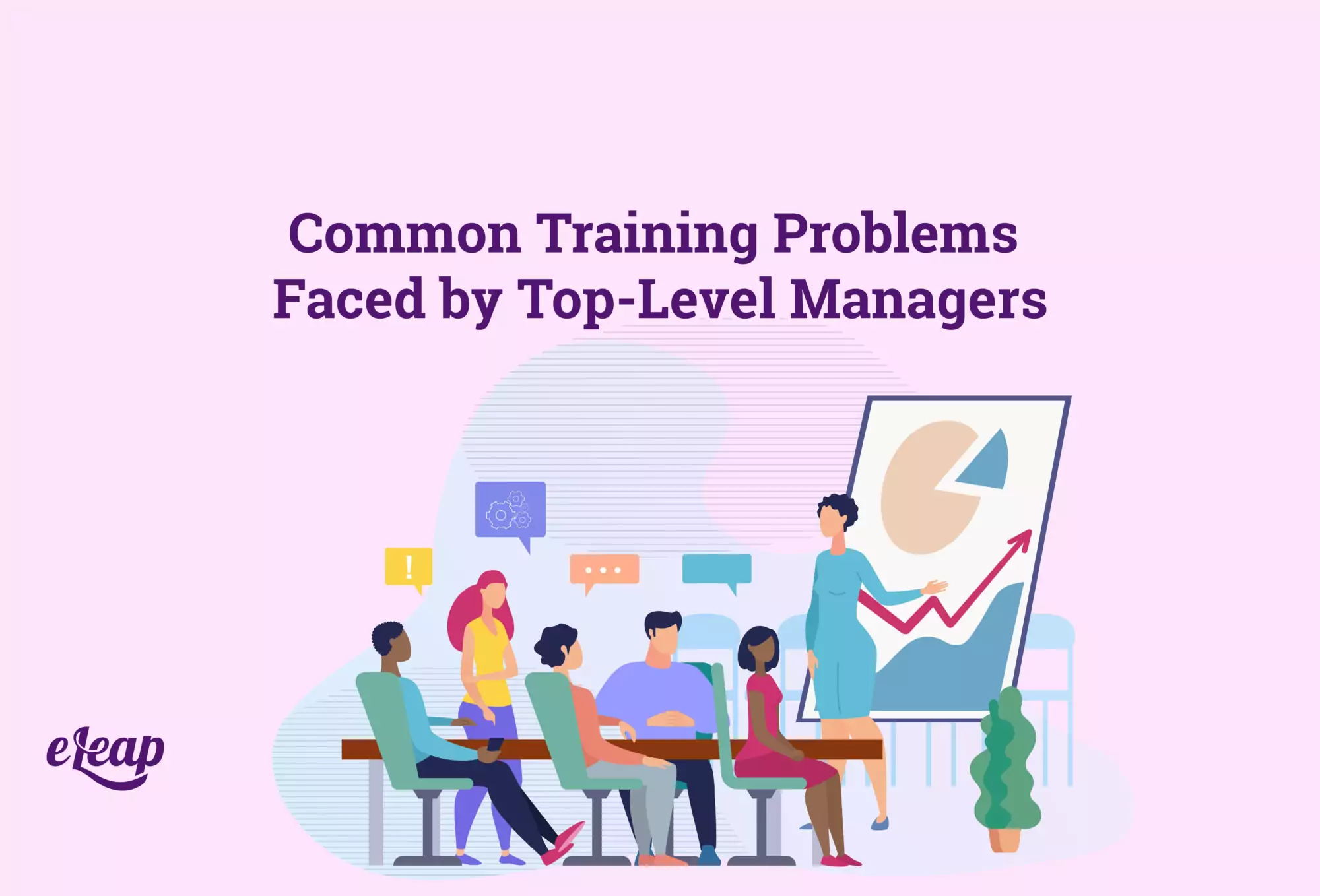Common Training Problems Faced by Top-Level Managers

Good leaders are critical to the proper functioning of an organization. Without them, things can go downhill pretty quickly. Top-level managers spend a lot of their time measuring, managing, and increasing performance. To be able to do this efficiently and successfully, they need to train and develop their employees. Failure by leaders in primary positions to implement the latter causes detrimental problems and often exposes weaknesses in how the managers themselves were trained.
Unfortunately, it’s a far too common occurrence that top-level managers forget that good coaching is a crucial part of their job. In their roles as coaches and leaders for their team members, most managers forget the importance of training and development. It’s not uncommon to see leaders who are high up on the ladder only concern themselves with performance, profits, and measurements. And focusing on these areas simply won’t yield results in the short or long term.
It is fairly common for organizations to have three levels of management: the top, the middle, and the bottom. Each managerial level is crucial in its own way, and they each have important skills to bring to an organization. Often, a lot of coaching and leadership tips are aimed at middle or lower-level managers, and those at the top of the managerial ladder are forgotten. But why? How top-level managers coach and lead is absolutely crucial. If there’s an issue at the highest level, problems can all too easily trickle down. Here, we will discuss common training problems faced by top-level managers.

Training Challenges That Top-Level Managers Face
Let’s get one thing clear from the get-go: Top-level managers cannot afford to ignore training. Top managers are the start of the coaching chain as they train and develop middle-level managers, and so on and so forth, all the way down the employee chain. They’re also responsible for managing bigger issues and dealing with substantial hurdles, such as assets and training infrastructure.
One of the primary goals for top-level managers should be to aim for optimal performance and maximizing the skillsets, productivity, and performance of employees. As a top-level manager, investing in training is paramount if any part of the organization is not performing. Many organizations, however, seem to encourage their top-level managers to focus on everything except training their employees. It can often become the task of those lower down on the corporate ladder to deal with training. But good training is absolutely essential to a well-run organization, so top-level managers need to be intimately involved in the process. What’s more, despite knowing the importance of training and development, some organizations rely on outdated traditional training methods, such as non-digital training and shadowing colleagues.
How Top-Level Managers Can Make a Difference to an Organization’s Training
The importance of training should be emphasized to everyone who works in an organization, from the top down. If it isn’t seen as critical to top-level managers, why would other employees think of it as important? Surveys have indicated that senior managers and CEOs and plan to use eLearning in their organizations. However, oftentimes, this isn’t relayed to lower management tiers, meaning that many middle and lower-level managers and employees aren’t on the same page. In such cases, it can’t be expected that they would take the right approach to training and development. You might be surprised to learn that many of the people you typically hire don’t understand the significance of training.
Ensuring Your Organization Has the Right Training Infrastructure
In the training and development process, your organization needs to have the right tools for top-level managers to utilize training and emphasize its importance. Infrastructure is critical. If your organization doesn’t have a solid foundational training infrastructure, namely a good learning management system, how can you expect management to take training seriously?
Making a decision to invest in advanced training or even replace old infrastructure with a contemporary learning management system is critically important. Simply telling managers and employees that training is important will do absolutely nothing if you don’t show a tangible investment in training. A solid training infrastructure is needed to implement any sort of useful, beneficial training. What’s more, when top-level managers take the initiative to use eLearning tools to their advantage, they show other employees how serious they are about developing an upstanding training program and sticking to it.
Follow Up by Tracking Results and Utilizing Reports
Your organization’s LMS should provide you with results, data, and answers to help track your training. But just having access to such reports and data won’t do anything as it needs to be utilized, and that starts with top-level management. Being able to track results enables you to follow up with trainers and learners to make sure that training is actually being adhered to and going to plan. Follow-ups using data also help to emphasize the importance of training and show how critical it is to results. Everybody in your organization needs to know what is going on – from your leaders to all of your employees.
Following the implementation of an LMS, far too many managers fail to follow up on learning progress in a timely manner. Remember, training is key to a well-run company, so reports on training and development are as essential as any other reports in an organization. Your LMS reports include metrics that can be directly compared with the organization’s performance, for example, metrics that indicate employee training engagement.
The key takeaway here is that training and its importance can and should be controlled and encouraged by top-level managers, such as incentives for training and increasing recognition. As a result, it’s important to ensure that top-level managers understand and enforce training and its importance, provide the proper training infrastructure, and then track and follow up on progress. If top-level managers aren’t bought into the importance of good training, no one else in your organization will be.